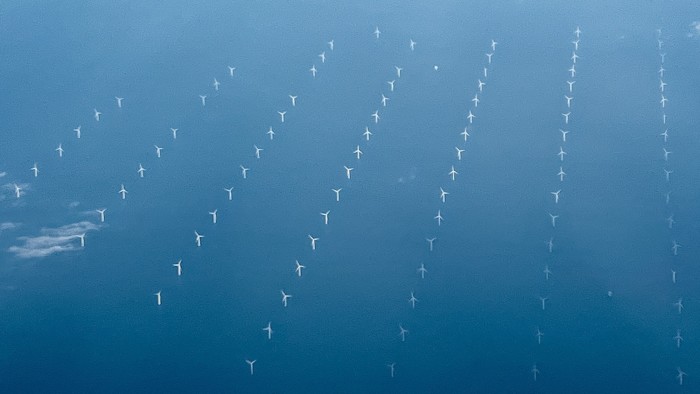Unlock the Editor’s Digest for free
Roula Khalaf, Editor of the FT, selects her favourite stories in this weekly newsletter.
On one front at least, it is hard to look ahead to 2025 with optimism. Hopes that climate change can be solved by global political horse-trading were further reined in by a dismal COP29 summit in Baku in November. Donald Trump’s re-election in the US has raised fears about what his return to the White House will mean for green technologies. With carbon emissions continuing to rise, what hope is there for the energy transition?
Amid the gloom, it is easy to lose sight of the fact that some green technologies are now cheaper than fossil fuel alternatives. In Europe, the levelised cost of solar — calculated by spreading required investments over the total energy produced over the equipment’s lifespan — is $64/MWh, thinks WoodMackenzie. The cost of electricity made by burning natural gas is more than twice that. Declining interest rates will benefit capex-heavy renewables more than fossil fuel rivals.
Of course, renewables may cost very little to run when the sun shines or the wind blows, but they bring a lot of other expenses with them. Batteries and other forms of storage are needed to manage intermittency. More grid infrastructure is required to move power from new producing regions. Such “system costs” increase with the penetration of renewables. But very broadly, systems with perhaps 60 per cent of renewable generation can still be cheaper than the full fossil alternative. In very sunny places the optimal mix is higher.
A failed offshore wind auction in December in Denmark — where wind energy already account for more than half of the power mix — suggests that some countries are already bumping up against the limits of what is economically feasible. But elsewhere there is a lot of ground to cover.
In India electricity demand is set to more than quadruple by 2060, with most of the increase supplied by renewables, according to Debabrata Ghosh at Aurora Energy. This requires upfront investment of £1.12tn but almost no running expenses. Delivering the extra energy via new coal capacity would cost £850bn in capex but, at current coal prices, the fuel would come to some £4tn over the life of the plants.
Just because things make economic sense does not mean they are going to happen on their own. Governments need to play ball — running auctions with long-term contracts to help developers find financing and building grids.
Cleaning up electricity only gets the world part of the way towards climate targets. With limited exceptions, greener industrial processes and air travel (among others) will always be more expensive than the alternative. Climate technologies do have some momentum of their own but reaching net zero will require politicians to come back to the table.
Read the full article here

